Property Development vs Subdivision in New Zealand: Understanding the Key Differences
 By
Trent Bradley
·
5 minute read
By
Trent Bradley
·
5 minute read

When exploring real estate investment opportunities in New Zealand, many investors encounter the terms "property development" and "subdivision" and wonder about the differences. While subdivision is technically a type of property development, understanding the distinctions between broader property development and subdivision-specific projects helps investors make informed decisions about which path suits their goals, resources, and risk tolerance.
Defining Property Development vs Subdivision
Property Development is the comprehensive process of transforming land or existing properties into more valuable real estate assets. This broad category encompasses everything from simple renovations to complex mixed-use projects involving multiple buildings, infrastructure, and extended timeframes.
Subdivision, on the other hand, is a specific type of property development focused on dividing larger properties into multiple separate titles or lots. While subdivision often involves some construction and infrastructure work, its primary goal is creating multiple saleable parcels from a single property.
Think of subdivision as a subset of property development - all subdivisions are property developments, but not all property developments involve subdivision.
Scope and Complexity Differences
The scope of typical property development projects often extends far beyond subdivision activities.
Property Development Scope: Full-scale property development may include land acquisition, planning and design, infrastructure installation, building construction, interior fit-out, landscaping, marketing, and sales. Projects might involve constructing apartment buildings, office complexes, retail centres, or entire residential communities with multiple building types and community facilities.
Subdivision Scope: Subdivision projects focus primarily on creating multiple lots from existing properties. While this involves planning, consenting, and often infrastructure work, the core activity is dividing land rather than constructing buildings. Many subdivision projects sell lots to other parties who handle building construction separately.
The complexity difference is significant. Property development projects involving construction require coordination of multiple building trades, complex project management, and often staged construction phases. Subdivision projects, while still requiring careful management, typically involve fewer variables and shorter construction periods.
Financial Investment and Risk Profiles
Capital requirements and risk profiles differ substantially between comprehensive property development and subdivision projects.
Property Development Investment: Major development projects often require millions of dollars in investment, with complex financing structures involving multiple funding stages. Developers must fund land acquisition, professional fees, construction costs, marketing expenses, and carrying costs throughout extended development periods. Returns can be substantial but often require 2-4 years to realise.
Subdivision Investment: Subdivision projects typically require lower initial capital investment, as they avoid major construction costs. Investors primarily fund land acquisition, consenting costs, infrastructure installation, and subdivision completion. While returns may be lower in absolute terms, they're often achieved faster with less capital at risk.
Risk profiles also differ significantly. Property development faces construction risks, cost overrun potential, market timing challenges, and complex project coordination requirements. Subdivision projects face fewer variables, though they still involve market risk and regulatory approval challenges.
Regulatory and Consent Requirements
Both development types face New Zealand's complex regulatory environment, but with different emphases and requirements.
Property Development Consenting: Comprehensive developments often require multiple consent types including resource consents for land use and subdivision, building consents for all structures, and sometimes additional consents for activities like earthworks or heritage modifications. Large developments may require detailed traffic impact assessments, infrastructure capacity studies, and extensive community consultation.
Subdivision Consenting: Subdivision projects primarily require resource consents under the Resource Management Act, focusing on lot creation, access provision, and infrastructure installation. While still complex, subdivision consents typically involve fewer technical specialists and shorter processing times than major building developments.
Both project types must comply with district plan requirements, but property development faces additional complexity through Building Code compliance, accessibility requirements, and often more intensive design review processes.
Timeline and Project Management
Project timelines vary dramatically between development types, influencing investment planning and cash flow management.
Property Development Timelines: Comprehensive development projects typically span 2-5 years from initial concept to final sales completion. Major phases include feasibility analysis (3-6 months), consenting (6-18 months), construction (12-36 months), and sales/settlement (6-18 months). Complex projects may experience longer timeframes due to construction challenges or market conditions.
Subdivision Timelines: Subdivision projects often complete within 12-24 months, with phases including feasibility and consenting (6-12 months), infrastructure installation (3-6 months), and title creation/sales (3-6 months). Simpler subdivisions may complete even faster, particularly where existing infrastructure capacity exists.
Project management complexity also differs significantly. Property development requires coordinating architects, engineers, multiple building trades, council inspectors, and sales teams across extended periods. Subdivision projects involve fewer parties and shorter coordination periods, though still requiring careful planning and execution.
Market Considerations and Target Buyers
Different development types serve distinct market segments with varying buyer profiles and purchasing motivations.
Property Development Markets: Comprehensive developments often target end-users seeking completed homes or commercial spaces. This includes first-home buyers, upgraders, investors seeking rental properties, and businesses requiring premises. Developers must understand interior design trends, lifestyle preferences, and functional requirements for their target markets.
Subdivision Markets: Subdivision projects primarily serve builders, developers, and owner-builders seeking land for future construction. These buyers often have different priorities, focusing on lot size, building potential, services availability, and development controls rather than aesthetic features or interior design.
Marketing approaches differ accordingly. Property developments emphasise lifestyle benefits, design features, and move-in convenience. Subdivision marketing focuses on building potential, zoning flexibility, and development opportunity aspects.
Entry Points and Scalability
The two development approaches offer different entry points for new developers and varying scalability options.
Property Development Entry: Comprehensive development often requires substantial experience, capital, and professional networks. Many successful property developers start with smaller projects like duplex developments or townhouse projects before progressing to larger complexes. However, even entry-level property development typically requires significant investment and expertise.
Subdivision Entry: Subdivision projects often provide more accessible entry points for new developers. Simple two-lot subdivisions or lifestyle block subdivisions can be completed with lower capital requirements and less complex project management. This makes subdivision attractive for property investors seeking development experience without major complexity.
Scalability patterns also differ. Property developers often grow by increasing project size, building complexity, or geographic expansion. Subdivision developers may scale by handling multiple concurrent projects or progressing from simple subdivisions to more complex master-planned communities.
Professional Team Requirements
Both development types require professional expertise, but with different specialisation emphases.
Property Development Teams: Comprehensive developments typically require architects, structural engineers, building surveyors, interior designers, landscape architects, project managers, and specialist contractors. Teams often include marketing specialists and sales professionals focused on end-user markets.
Subdivision Teams: Subdivision projects primarily require planners, surveyors, civil engineers, and infrastructure contractors. While teams may be smaller, expertise in resource management law, council processes, and infrastructure design remains crucial for success.
The ongoing relationship requirements also differ. Property development often involves extended collaboration with design professionals throughout construction phases. Subdivision projects typically front-load professional involvement during planning and consenting phases.
Financing Structures and Requirements
Development finance requirements reflect the different characteristics and risk profiles of each development type.
Property Development Finance: Comprehensive developments typically require sophisticated financing structures with multiple funding stages. Banks and private lenders often require substantial pre-sales commitments, detailed cost estimates, and experienced contractor involvement before approval. Interest rates may be higher reflecting construction risk and extended development periods.
Subdivision Finance: Subdivision projects often access more straightforward financing arrangements, as they involve less construction risk and shorter development periods. Lenders may require lower pre-sales commitments and often provide more flexible funding arrangements. However, developers still need detailed feasibility analysis and appropriate professional team involvement.
Both development types benefit from working with specialist development finance providers who understand the unique requirements and risk factors involved.
Choosing Between Development and Subdivision
Selecting between comprehensive property development and subdivision depends on multiple factors including available capital, risk tolerance, market knowledge, and personal expertise.
Consider subdivision if you have limited development experience, prefer shorter project timeframes, want lower capital exposure, or have identified suitable sites with subdivision potential. Subdivision can provide excellent returns while building experience and professional networks for future development activities.
Consider broader property development if you have substantial capital available, possess relevant experience or professional networks, can manage complex projects effectively, and are comfortable with extended investment periods. Property development can provide larger absolute returns but requires greater expertise and capital commitment.
Many successful developers use both approaches strategically, perhaps funding property development through subdivision profits or using subdivision as a pathway to larger development opportunities.
Future Trends and Opportunities
Both development approaches face evolving opportunities and challenges in New Zealand's changing regulatory and market environment.
Urban intensification policies favour both subdivision and property development in suitable locations, while infrastructure investment creates opportunities in previously constrained areas. Environmental considerations increasingly influence both development types, with sustainability features becoming market expectations rather than optional extras.
Housing affordability concerns create opportunities for both development approaches, though regulatory responses may favour certain project types or locations over others.
Working with Development Finance Specialists
Whether pursuing property development or subdivision, working with experienced development finance specialists significantly improves project success prospects.
At Luminate Finance, we understand the unique characteristics, opportunities, and challenges associated with both property development and subdivision projects. Our expertise helps developers choose appropriate project types, structure effective financing arrangements, and navigate the complexities of New Zealand's development environment successfully.
We work with developers across the spectrum from simple subdivision projects through to complex mixed-use developments, providing tailored finance solutions and expert guidance throughout the development process.
Evaluating property development vs subdivision opportunities for your next project? Contact Luminate Finance today to discuss how our specialist expertise can help you choose the right development approach and structure success from concept through completion.

Trent Bradley
Trent Bradley is a New Zealand financial advisor specializing in property-backed finance and investment consulting. With over 26 years of experience running his mortgage broking business, he has helped wholesale investors access high-yield property-backed loan opportunities. For the past 12 years, Trent has led Luminate Finance, a New Zealand finance company dedicated to connecting investors with secure property investment solutions.




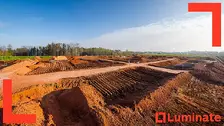


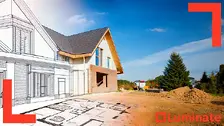

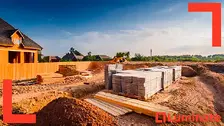
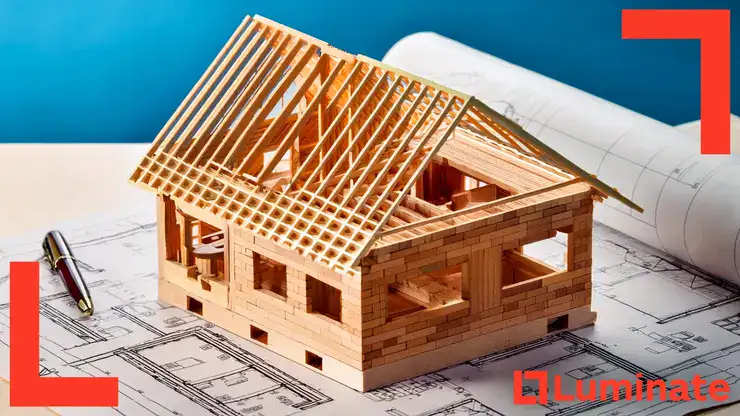







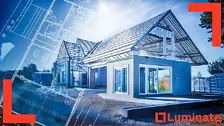
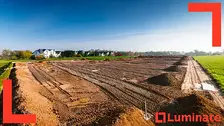
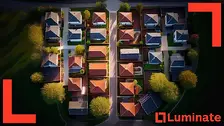







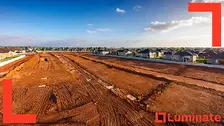
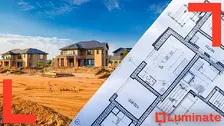
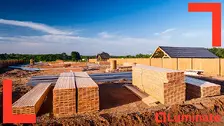



.png?//48413319.fs1.hubspotusercontent-ap1.net/hubfs/48413319/Featured%20images%20(14).png&width=247&height=126&name=Featured%20images%20(14).png)



